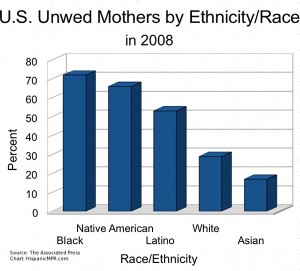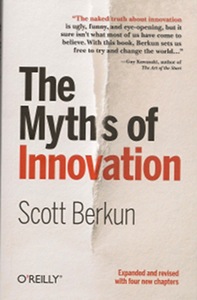Posted by Elena del Valle on December 1, 2010
By Juana M. Véliz
Managing director, Hispanic Practice, Lagrant Communications

Juana M. Véliz, managing director, Hispanic Practice, Lagrant Communications
Photo: Lagrant Communications
New data from the Yankelovich Monitor Multicultural Study 2010 reported what we, as multicultural communicators and marketers, have experienced: Hispanic and African American consumers are more willing to purchase from, and be loyal to, companies actively engaged in their communities to make a positive change.
While one-third of Hispanic and African American consumers said they almost always choose brands because they come from companies that help the causes they support, just one in five non-Hispanic Whites agreed to do the same.
Accordingly, in order to build long-lasting relationships and earn the loyalty of Hispanics/African American consumers, it’s essential to include a social component into our strategies that shows understanding and commitment to their needs.
Click here to read the entire article CSR: A door to social and organizational growth
Posted by Elena del Valle on November 29, 2010

Click to enlarge
According to a recent Associated Press article (Rate of unmarried mothers reaches 72% among blacks), the offspring of unmarried mothers of any race are more likely than others to under perform in school, be imprisoned, use drugs, live in poverty as adults and have children while unmarried. In spite of the grim statistics 41 percent of mothers in the United States in 2008 were unmarried.
When we examine the statistics by racial and ethnic groups the figures are revealing. The most notable figure is among blacks where 72 percent of mothers that year were unwed. Still significant was that 66 percent of Native American and 53 percent of Latino mothers were unmarried. Twenty-nine percent of non Hispanic white mothers were unmarried that year. Asian moms were the least likely (17 percent) to have a child while unmarried.
Social attitudes toward marriage have changed in recent generations and being a single mother is much less frowned upon by society than in past decades. As women have become better able to make a living on their own their need to be married and have a husband in their lives for purely financial reasons has decreased significantly even if their earning power is lower than that of their male peers in many professions according to the Bureau of Labor Statistics (see Earning power for women stalls as pay scale still lags behind men at NJ.com).
At the same time, it is possible that some of the mothers in the Associated Press article statistics have significant others helping to raise the newborn. Some may find the high percent of unmarried mothers among historically Catholic Latinos surprising.
In some cases they make have a life partner but didn’t marry because they couldn’t afford the cost of a big wedding in the country of origin, according to an article about unmarried Hispanic mothers in Tennessee. Some even may be in a relationship where one of the partners may not be able to marry because they already have a spouse in their country of origin. Or they may be mimicking United States living together trends as part of the acculturation process.
Posted by Elena del Valle on November 24, 2010
Posted by Elena del Valle on November 19, 2010

The Myths of Innovation book cover
Scott Berkun looks, with humor, at the history of ideas in the newly published paperback edition of The Myths of Innovation (O’Reilly Media, $17.99). This edition includes four new chapters on finding ideas and putting them to work, updated references, and new stories.
The author set out to share with readers his thoughts on where ideas come from, the history of history, why people don’t like ideas, how ideas thrive, how to pitch an idea and the benefits of innovation. He believes one of the secrets to discovering ideas is to work hard while making sure to include down time. Letting the mind wander frees our subconscious to be creative, Berkun says.
According to Freeman Dyson, a physicist and author Berkun quotes in his book, people who are busy all the time are not creative. At the same time Dyson says that breaks only work if they represent a change from productive work. In other words, being on a full-time vacation does not necessarily lead to creativity; although multitasking may be helpful by allowing the mind to take a break from one project while the person works on another.
“Innovation is simple if you stop thinking about it in the broken, false, but popular ways others do, and the book is a great guide,” said Berkun in a press release. “It’s been so popular because it makes the surprising truth about how great things happen fun and inspiring, as well as easy to apply at work as soon as you put the book down.”
Berkun also points out that the line between creative and insane (or eccentric) is a fine one. At the same time he believes that the moment of discovery cannot be controlled and is only one part of making an idea into a success. He argues that innovation for the sake of innovation is not always the answer in the same way that the status quo isn’t always the best solution. In an earlier chapter he proposes that while innovation itself cannot be harnessed it is possible to identify the challenges faced by innovators; he proposes eight main challenges.
Berkun is the author of Making Things Happen and Confessions of a Public Speaker. Since Aug 2010 he works for Automattic on WordPress.com. The author grew up in Queens in New York City, studied design, philosophy and computer science at Carnegie Mellon University, graduating with a B.S. in Logic and Computation. He worked at Microsoft from 1994 to 2003. His work has appeared in The Washington Post, The New York Times, Wired Magazine, Fast Company, and Forbes Magazine.

Click to buy The Myths of Innovation
Comments:
Filed Under: Books
Posted by Elena del Valle on November 17, 2010
By Dianna L. Stone, Ph.D., professor of Management
Joy Row, MBA, research project manager
Teresa Svacina, M.S., and Julio Canedo-Soto, MBA doctoral students
University of Texas at San Antonio




Dianna L. Stone, Ph.D., Joy Row, MBA, Teresa Svacina, M.S. and Julio Canedo-Soto, MBA
There has been a dramatic rise in the number of Hispanic owned businesses in the U. S. One reason for this is that entrepreneurship often provides a springboard for the economic advancement and social integration of minorities. Despite this growth, little research has focused on the success of Hispanic owned businesses. Studies have shown that minorities are more likely to start small businesses, but are less likely to be successful than Anglos1.
Although there may be a number of reasons for this, researchers have argued that the lack financial skills may be a key source of the problem. Results of other research shows that Hispanics2, and Hispanic business owners3 may have limited knowledge of financial planning. Thus, the primary purpose of this article is to relay results of some recent research on Hispanic business owners’ knowledge and use of financial planning.
Click here to read the entire article Hispanic business owners are more knowledgeable about financial planning than previous research suggests
Posted by Elena del Valle on November 15, 2010

Click to enlarge
Photo: Nestlé
Americans consume a respectable amount of coffee although if we look at the big picture the amount of coffee the typical person in the United States drinks per capita is modest compared to that of many consumers in Western European nations. The top consumers by far are the Scandinavians. In 2002, Norwegians drank an average 10.7 kilos of coffee per person per year. Finland and Denmark were close behind with consumption around 10 kilos in each country. Dutch, Swiss, German, Austrian, Belgian, French and Italians were all ahead of the United States in coffee drinking, according to the Global Market Information Database by Euromonitor.
In 2009, in the United States daily consumption of coffee beverages among consumers remained consistent with 54 percent of the overall adult population partaking; cups-per-drinker and cups-per-capita held at the 2008 level and that of the previous four years, according to the National Coffee Association. While coffee consumption has held steady during the recession there are some consumption and purchasing trends worth noting.
Most people buy their coffee at the supermarket, according to the recent findings of Mintel, a research company. In the last five years this venue has grown 18 percent, reaching $3.4 billion this year. Another significant venue for retail sales are mass merchandisers and dollar stores. These venues grew 19 percent and reached $3.8 billion in 2010. The expectation for the immediate future is that the lower consumer confidence the greater the growth in these stores.
As people worry about the economy they migrate toward roasted coffee and other products they can brew at work and at home. If the worries deepen they are likely to seek value brands like Folgers and Maxwell House. FDMx sales of roasted coffee led overall market growth and grew 3.8 percent between June of 2009 and 2010. Folgers, part of J.M. Smucker Co. and seen by many as a strong United States brand, also had strong growth during those months. Kraft brands Maxwell House and Yuban also showed gains.

Sales of Nescafé Clasico increased 10.9 percent
In addition to the over 45 and over 55 market segments which exhibit the largest growth (see Baby Boomers biggest coffee drinkers, Emerging Markets likely to drive future growth), another segment expected to continue exhibiting high demand is Hispanics. FDMx sales of Nescafé Clasico, sometimes sold in bilingual packages, increased by 10.9 percent during the period examined by Mintel leading researchers to conclude that bilingual packaging may drive growth in instant coffee products which they found to be very popular among Spanish-speaking Latinos. Some marketers believe coffee sellers should enhance bilingual messages and packaging for instant coffee products popular among Spanish-speaking Hispanics. Nescafé Clasico, also available in Decaf and Suave flavors, is described on the Nestlé website as “the leading coffee for Latinos in the U.S.” and “the fastest growing brand in the instant coffee category with distribution nationwide in the U.S.”
Hispanics are more likely to drink coffee than non Hispanic whites, blacks and Asians. Among Asian coffee drinkers almost half buy whole bean coffee compared to 29 percent in the general population. According to Mintel, the research suggests that representations of Latinos should “often be included in advertisements as this helps to create brand relevance within the segment.” While among the general population 29 percent of buyers choose whole bean coffee, nearly half of Asian coffee-consuming households prefer whole bean coffee. Mintel researchers believe marketers should include Asians in advertising campaigns for whole bean coffee.
Fifty four percent of Latino Mintel survey respondents indicated they like non-sweetened instant coffee compared to 28 percent of the general population. About 70 percent of Spanish dominant Latinos (those who speak mostly or only Spanish), especially in Los Angeles, California and El Paso, Texas, like instant coffee.
Posted by Elena del Valle on November 12, 2010

Un Puente Al Derecho book cover
Photo: Blacker Publishing Inc.
Oregon attorney Frank de la Puente believes the people with the least economic and political power, and the most vulnerable to abuse are those who do not know their rights. To address this issue he wrote Un Puente Al Derecho, Spanish for a bridge to the law (Blacker Publishing, Inc., $24.95), a book in Spanish with information about legal issues for Hispanics, especially those who do not speak English and the undocumented. He estimates there are eight million undocumented Hispanics many of whom could benefit from the information in his book.
The 205-page softcover book is divided into four main parts: Abogados, Jueces y Cortes (lawyers, judges and courts); La Ley del Divorcio (divorce law); Bienes Raíces (real estate); and Inmigración (immigration). His goal is to provide information about what for many people is a complex topic in easy-to-read Spanish illustrated with case examples.
He includes information about the process of divorce, child custody, support, distribution of property, and the rights of unmarried and homosexual partners. The section on real estate informs the reader on the aspects of buying and selling a house, including appraising, financing, escrow and insurance. A section on immigration provides information about the legislative proposals for immigration reform, and obtaining a resident visa through a family member.
De la Puente, a trial attorney for 20 years, spent four years of night and weekend work to research the laws of states other than his home state and write the book. According to a representative from the publishing company the book is gaining momentum. In October 2010, the Library Journal Online reviewed the book which is listed as a new release on AmericaReadsSpanish.com.
Promotion of the book has been primarily by press releases and review submissions. The author, who has been a guest on Spanish language radio talk shows in Dallas and Eugene Oregon for 16 years, has made two TV appearances on Univision Television in Portland, Oregon; and appears once per month as a guest of Nelson Zepeda’s Spanish radio talk show, 1520 AM, Portland, Oregon, fielding legal questions from listeners.
De la Puente was born in Callao, Peru in 1957. When he was nine he and Ines Arimborgo Bondy, his single mother, emigrated to Los Angeles, California where he grew up. From 1969 to 1971 he served in the United States Army. During that time, he served one year in active combat as an infantryman with the First Cavalry Division in the jungles of Vietnam. After the Army and graduating with a degree in mathematics from University of California, Irvine he worked as an aerospace engineer in California for Hughes, Northrop and Rockwell. In 1990, he graduated with a law degree from Willamette University College of Law in Salem, Oregon.
He started his law career as a special prosecutor in Marion County, Oregon, before becoming a federal criminal defense attorney for 13 years. Today, he primarily practices civil litigation including contract disputes including real estate and foreclosures, federal civil forfeiture, divorce and child custody, and actions for damages arising out of personal injury.

Click to buy Un Puente Al Derecho (Spanish Edition)
Comments:
Filed Under: Books
Posted by Elena del Valle on November 10, 2010
By Larry Thomas
Chief Executive Officer
Latergy, LLC

Larry Thomas, chief executive officer, Latergy, LLC
Photo: Larry Thomas
Rather than fill this space with statistics about the growing population of U.S. Hispanics with Internet access, watching online video and using social media, I’ll simply mention that there are:
– 500 million active Facebook users spending 500 billion minutes per month
– 50 million Tweets per day on Twitter
– 2 billion videos watched daily in the U.S. alone
The two fastest growing components of the Internet, social media and online video, are fueling each other’s growth. According to a recent study about online video usage and drivers, referral traffic from Facebook and Twitter lead to the longest video viewing times and it’s growing faster than traditional search engines as a source of video views. At current rates, Facebook will surpass Yahoo! within the year to be second only to Google in referral traffic to online video content for media companies. For a deeper look at what I call Social Video please read my recent column in Bulldog Reporter’s Daily Do, BP Takes U.S. For a Slick Social Video Ride — Viral Lessons for Paranoid PR Pros.
Click here to read the entire article Social Video and Webcast Communication






















